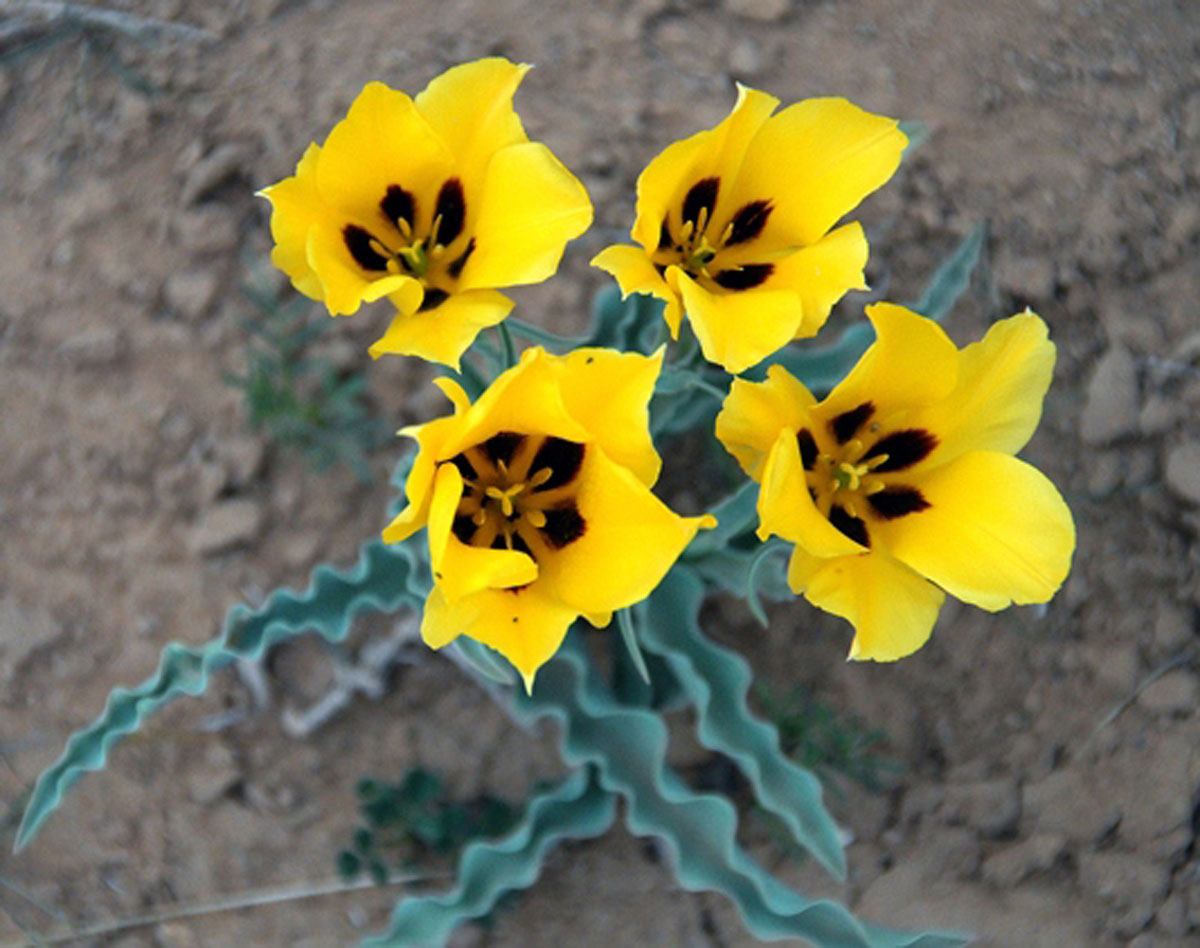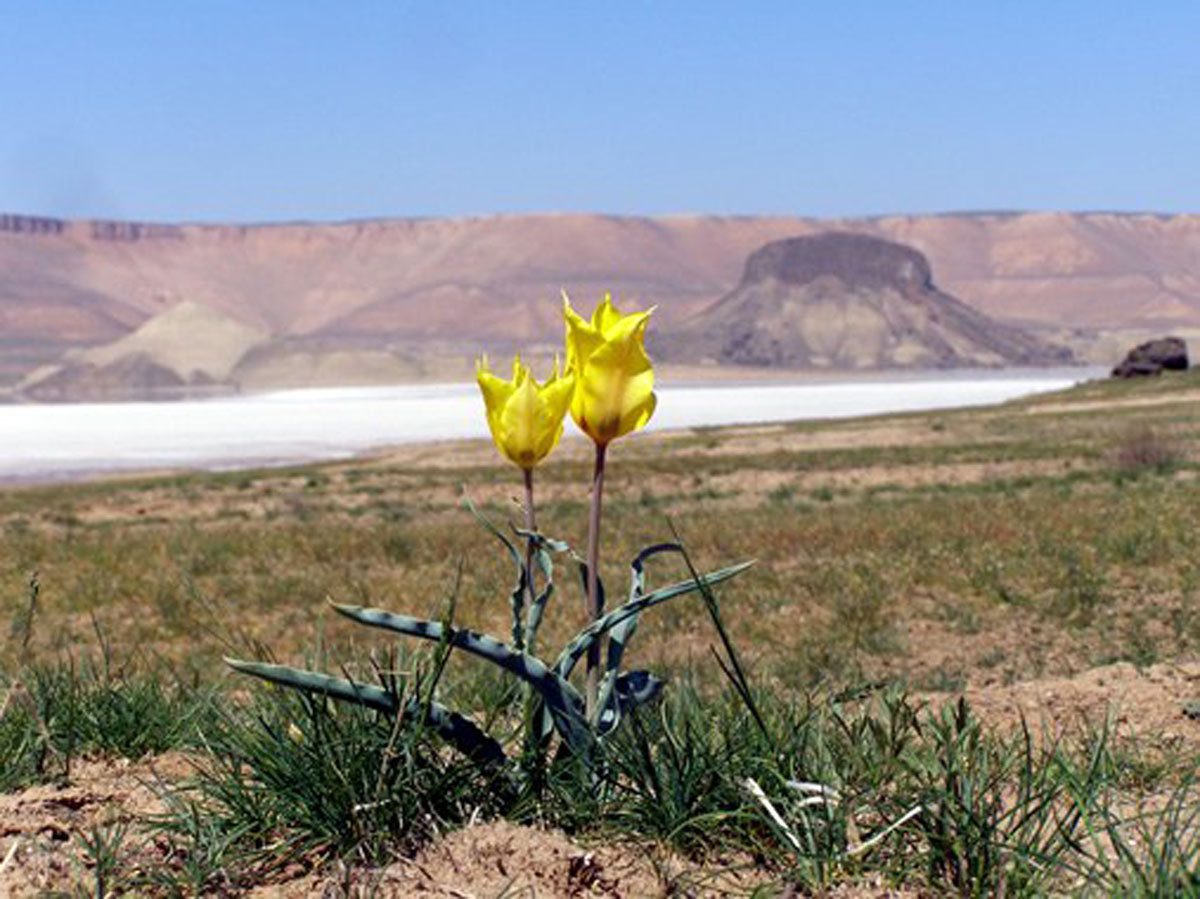In an arid hot climate, April is a wonderful time when the time comes for the appearance of wild tulips - bulbous plants of the lily family - among the lushly vegetative herbaceous vegetation. For a short period of time, they fabulously transform the flat and hilly areas of the Kopetdag foothills. Gulnabat Jumamyradova, a researcher at the National Institute of Deserts, Flora and Fauna of the Ministry of Environmental Protection, talks about the most remarkable species that are found on the territory of Turkmenistan:
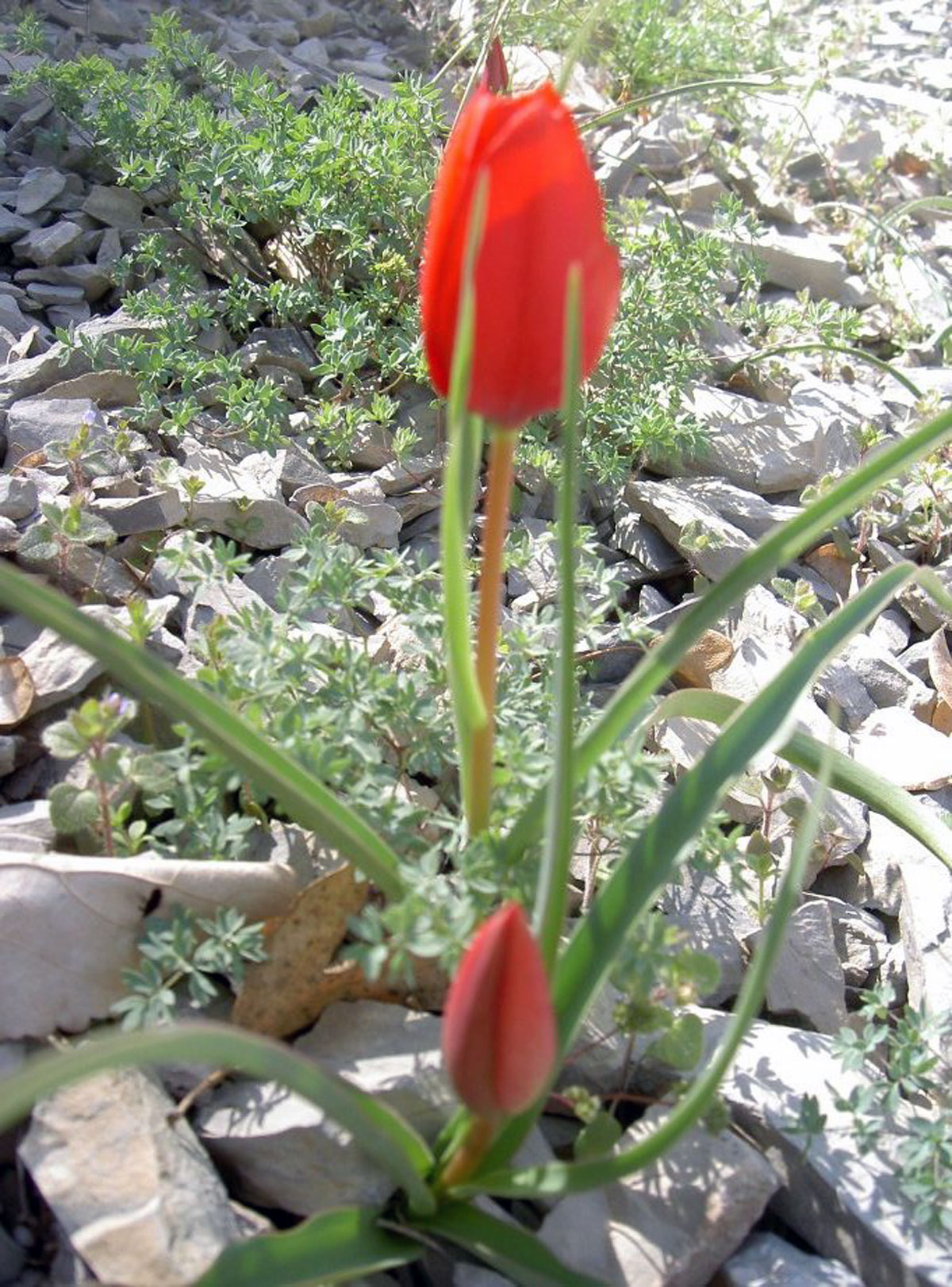
– If a tulip is not picked, it can live up to 70 years (the life of a tulip in natural conditions is comparable to human life: juvenile age up to 17 years, adult active flowering and aging-death). In the first year, a cylindrical cotyledon leaf sprouts from the seeds - thin as a green thread. It develops a small onion that will go deeper into the ground every year. The next year a flat leaf grows. The bulb and leaf continually enlarge, but it takes more than ten years for the plant to bloom for the first time. When a tulip comes into full bloom, it blooms for several more decades, usually propagating by seeds and vegetatively, that is, by separating daughter bulbs from the mother bulb. Over time, there are breaks in flowering and death begins.
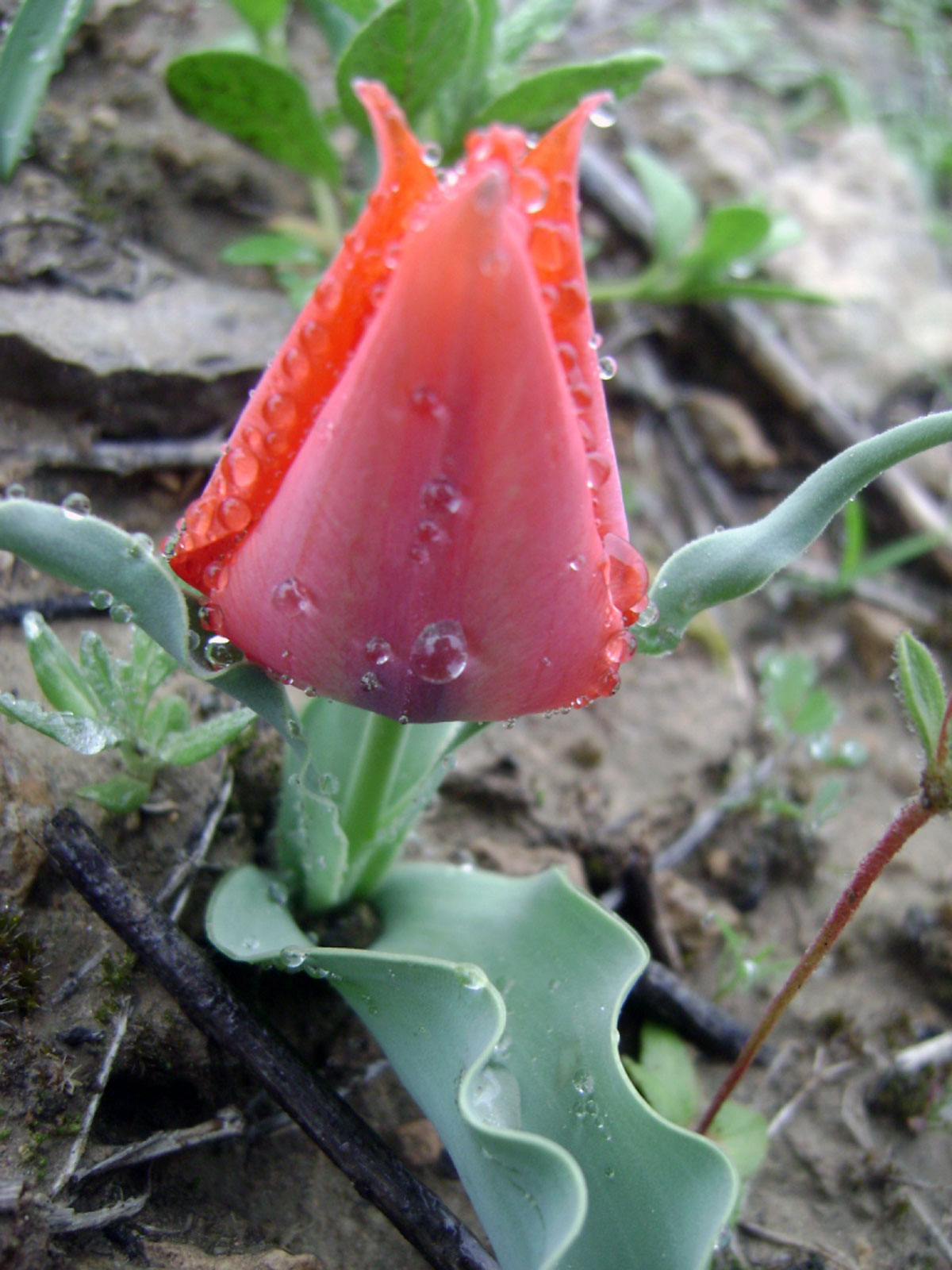
The petals of tulips open earlier than others - Buse, Turkmen and Sogdian. The Buse tulip produces two or three narrow shiny leaves located opposite each other on the ground, and between them rises one (rarely two) peduncle with a three-star, medium-sized cream flower with a faint citrus scent. At night, the flowers close, but as soon as the sun rises, they look up cheerfully again. The Sogdian tulip loves sandy soil, it is also called a desert flower, an inhabitant of dry or clayey landscapes. The plant is low - up to 20 cm in length with narrow-lanceolate leaves. Flowers may appear in March, small, pale pink in the form of stars three centimeters in diameter with a pleasant aroma. To cultivate this species, you need a high sandy bed that does not retain rainwater. The endemic Turkmen tulip, growing in the mountains of the Central and Western Kopetdag, is unique. It has single flowers, but sometimes there are several of them on short peduncles, star-shaped, white, the bottom is bright yellow, with a faint pleasant aroma. Blooms for 13-20 days in February. Sogdian and Turkmen tulips have small populations.
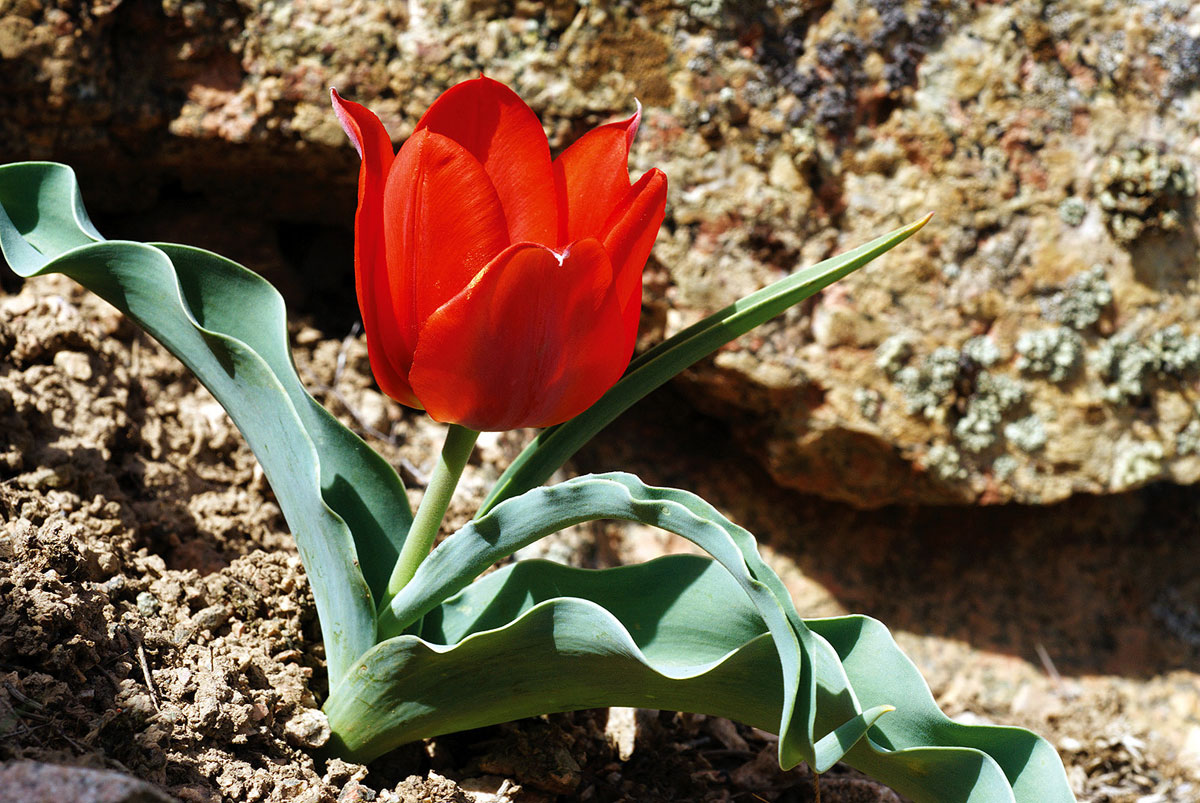
The «Red Book« tulip Kushkinskiy belongs to the large-flowered species - endemic to Badhyz and Garabil, lives on the sandy plain, in the lower belt of mountains, on gray soils. It has a large, cup-shaped bright red flower eight centimeters high and seven centimeters in diameter. Flowering is observed in the first ten days of March and lasts 30 days. The Leman tulip is listed in the Red Book of Turkmenistan and is common in Badhyz and the mountains of Eastern Kopetdag. The flowers are quite large, up to seven centimeters in height, their petals can be bright yellow, orange, red. Flowering takes place in March for 18-20 days. The species does not tolerate humidity at all and, due to polychroism, is prone to hybridization.
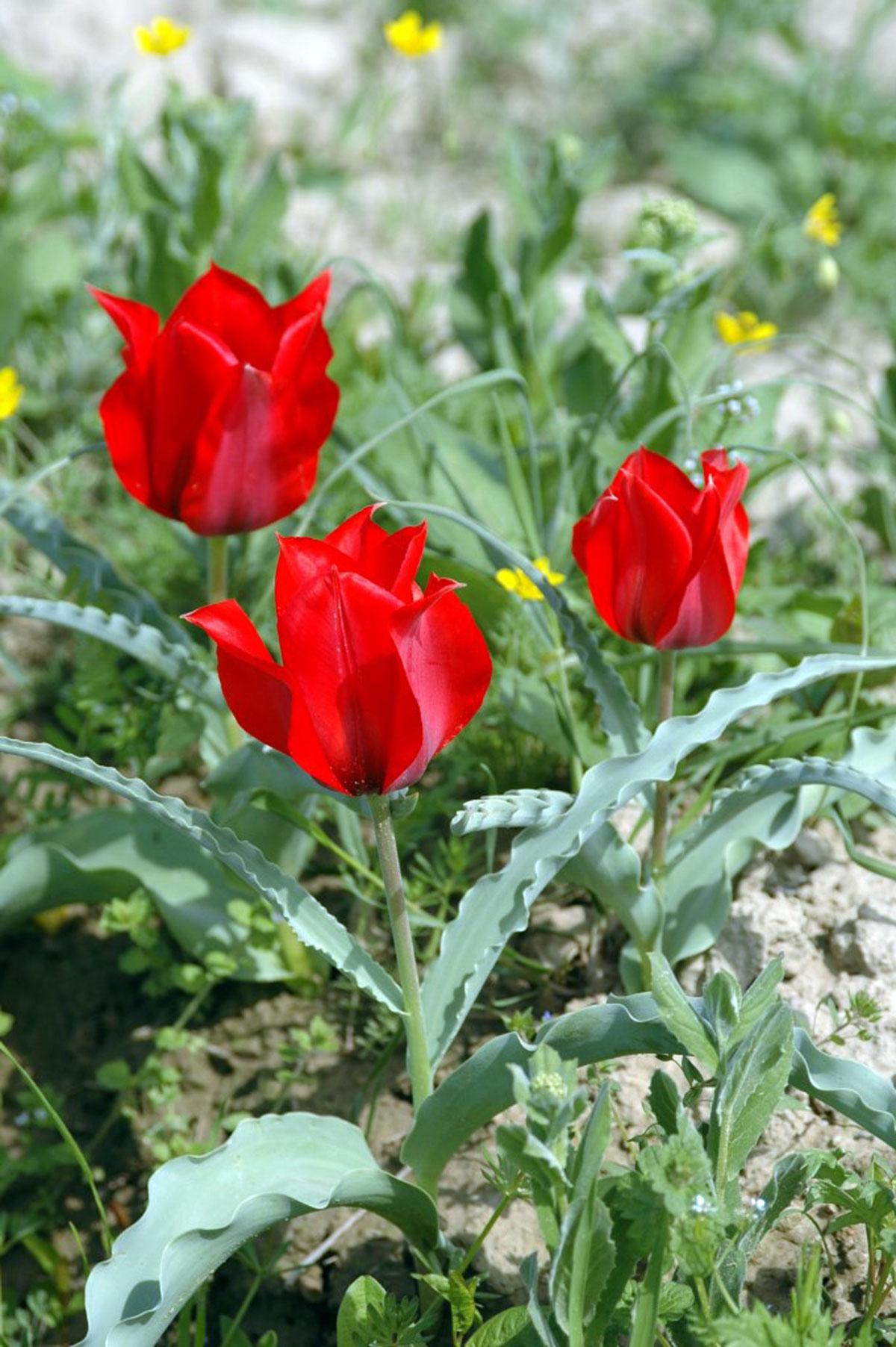
On the gray soils of Koytendag at an altitude of up to three thousand meters above sea level, the great tulip grows, which is an adornment of the spring flora of Turkmenistan. In March, the slopes and plateaus of these mountains appear scarlet from the huge number of tulips. Its flowers are large, shaped like a sharp-rayed star, and in nature reach 10-11 cm in height. It has bluish, fluffy, slightly curly leaves on both sides. Plant height is 30 cm. Wilson's tulip is rare, lives only on gravel slopes and plateaus of the Central and North-Western Kopetdag, blooms with single small flowers in March. The flower is cup-shaped with a conical bottom, scarlet with a small black spot in the form of a narrow strip at the base.
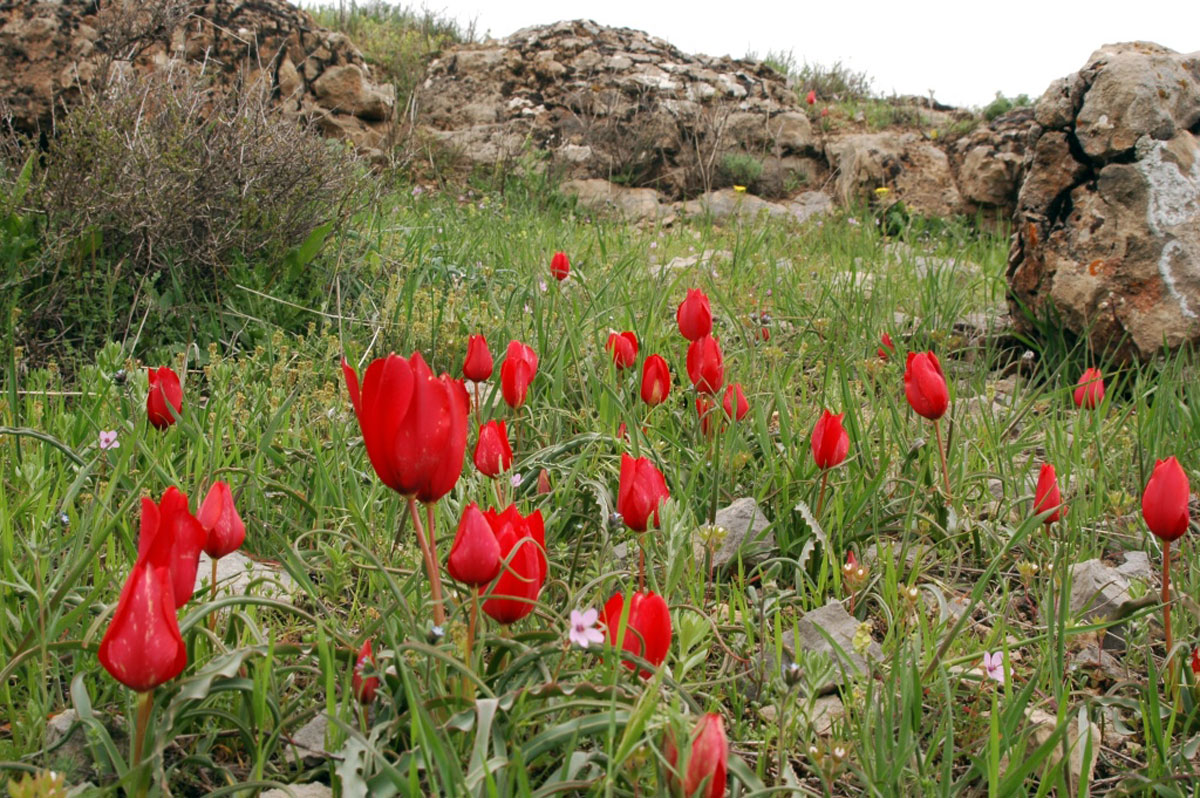 People rejoice at the signs of the awakening of nature, plucking precious flowers for a bouquet that will wither the very next day. In this regard, it is worth recalling that even one tulip removed from nature can deprive nature of a hundred such plants in the future. Many are sure that by picking a flower without a bulb, they do not harm nature. This is wrong. The bulb spends everything that has been accumulated over the year on the formation of a flower. At the same time, through photosynthesis, nutrients from the leaves flow back into the bulb. The next year, a strong bulb shoots out a stem with a flower, while a weak one will form only a leaf. If tulips are constantly picked in one place, then in the absence of seed distribution, in conditions of the natural death of adult plants, the population may decline.
People rejoice at the signs of the awakening of nature, plucking precious flowers for a bouquet that will wither the very next day. In this regard, it is worth recalling that even one tulip removed from nature can deprive nature of a hundred such plants in the future. Many are sure that by picking a flower without a bulb, they do not harm nature. This is wrong. The bulb spends everything that has been accumulated over the year on the formation of a flower. At the same time, through photosynthesis, nutrients from the leaves flow back into the bulb. The next year, a strong bulb shoots out a stem with a flower, while a weak one will form only a leaf. If tulips are constantly picked in one place, then in the absence of seed distribution, in conditions of the natural death of adult plants, the population may decline.
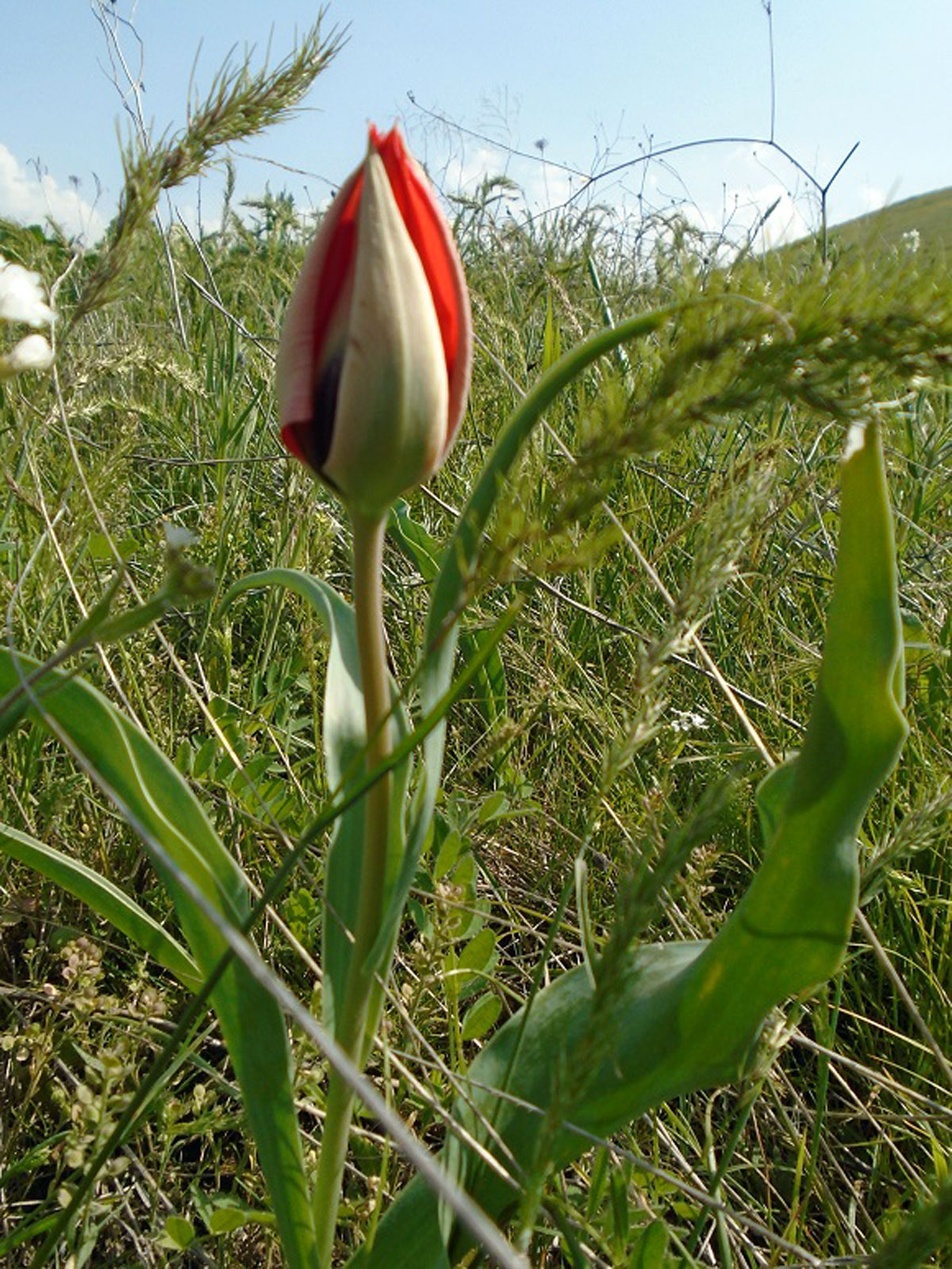
Of the 16 species of tulip growing on the territory of our country, nine species are included in the new 4th edition of the Red Book of Turkmenistan, work on which has come to an end. In the 2nd and 3rd editions there were seven types of tulip. The Red Book includes those whose populations are declining mainly regardless of human actions. Environmental illiteracy and even human biological hooliganism can be combated, but tulips can disappear for natural, climatic reasons that can only be stated. Scientists are finding out the reasons for the extinction of the species, monitoring its habitat, growing season, seed formation, and germination within plant nurseries on the territory of state reserves and other experimental scientific sites in order to identify the possibility of restoring a stable level of viability of the wonderful creatures of the Turkmen spring.
